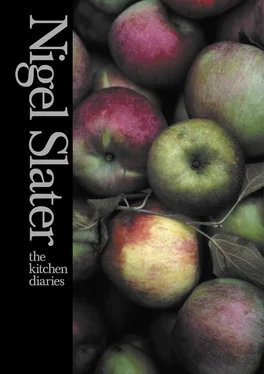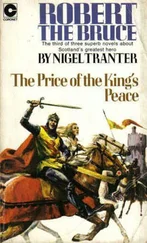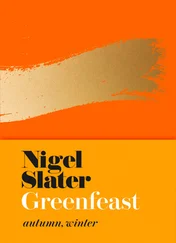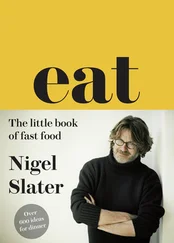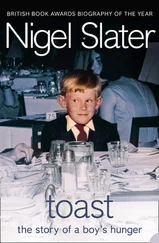Peel the thin skin from the salami and cut the inside into fat matchsticks. Add this to the softening onions and leave for a couple of minutes, during which time the salami will darken slightly.
Start cooking the sausages in a non-stick pan. You want them to colour on the outside; they will do most of their cooking once they are in the sauce. Tip the crushed tomatoes into the onions, add the washed lentils and stir in 500ml water. Bring to the boil. Remove the sausages from their pan and tuck them into the casserole with the bay leaves. Cover the pot with a lid and leave to simmer gently for about half an hour, until the lentils are tender. Stir the lentils and season with black pepper. You may find it needs little or no salt.
Enough for 2, with seconds
Not difficult this, but do make absolutely certain there are no holes or cracks in the pastry case, otherwise the filling will escape, I guarantee.
limes – 5–7
large eggs – 6
caster sugar – 250g
double cream – 175ml
For the pastry:
plain flour – 175g
golden icing sugar – 40g
cold butter – 90g
egg yolks – 2
cold water – 1 tablespoon
To make the pastry, put the flour and icing sugar into a food processor, add the butter, cut into chunks, and blitz for a few seconds. Stop when the mixture resembles fine breadcrumbs. Mix in the egg yolks and water. Tip into a mixing bowl and bring the dough together into a thick log with your hands. Wrap it in greaseproof paper and refrigerate for a good half hour. Warning: skipping this bit will make your pastry shrink.
Cut thin, round slices from the log of pastry, then press them into a loose-bottomed 23–24cm tart tin with high sides (3.5cm), pressing the pastry gently up the sides and over the base (this pastry is too fragile to roll). Make certain that there are absolutely no holes, otherwise the filling will leak through. Prick lightly with a fork and refrigerate for half an hour.
Set the oven at 200°C/Gas 6. Place a sheet of greaseproof paper in the tart case and fill it with baking beans (I use old haricot beans but you can buy ceramic or metal beans especially for the job from cookware shops). Bake the tart case for ten minutes, then remove the greaseproof paper and beans and bake for a further five minutes, until the pastry is dry to the touch.
Turn the oven down to 150°C/Gas 2. Finely grate the zest from two of the limes. Squeeze enough limes to give 180ml juice; this could be anything from five to seven limes, depending on their ripeness. Mix the eggs and sugar together, beating lightly for a few seconds – you don’t want it to be frothy – then stir in the lime juice and cream. Pour the mixture through a sieve and stir in the lime zest. Pour into the baked tart tin and bake for forty-five to fifty minutes. Remove whilst the filling is still a little wobbly and leave to cool.
Enough for 8
A ploughman’s lunch is something to be kept away from the whims of an imaginative cook. The most tinkering I will tolerate is the occasional oatcake in lieu of bread and the odd radish or pickled onion as a crunchy distraction. If the cheese is firm and British then I’ll willingly take an apple too. Today I slice a Cox’s apple and let it colour in a little butter in a non-stick frying pan. I put a jagged piece of Mrs Appleby’s Cheshire cheese and a slice of warm, tender apple on to each oatcake and eat them whilst the apple is still hot. Yes, a mucked-about ploughman’s but surprisingly none the worse for it.
Chicken patties with rosemary and pancetta Chicken patties with rosemary and pancetta I put these on the table with fat wedges of lemon and a spinach salad. a medium onion garlic – 2 cloves a thick slice of butter cubed pancetta – 100g rosemary – 3 bushy sprigs minced chicken – 450g a little groundnut oil for frying chicken stock – 250ml Peel the onion and garlic and chop them finely, then let them soften in the butter over a moderate heat (a non-stick frying pan is best for this, then you can use it to fry the patties in later) until they are lightly honey-coloured. Stir in the small cubes of pancetta. Strip the rosemary leaves from their stalks, chop them finely, then add them to the onions, letting them cook for a few minutes till coloured. Let the mixture cool a little. Mix the minced chicken into the onion, seasoning it generously with black pepper and a little salt (the pancetta will contribute to the seasoning). Set the oven at 190°C/Gas 5. Now, to make the simple patties, shape the mixture into six little burgers about the size of a digestive biscuit, then leave to settle for half an hour. Wipe the onion pan clean and get it hot. Add a little groundnut oil and brown the patties on both sides – that’s a matter of three minutes per side – then transfer them to an ovenproof dish. Pour in the stock and bake for twenty-five to thirty minutes, till the patties are sizzling and the stock is bubbling. Serve two to three per person and spoon over some of the hot chicken stock. Enough for 2–3. Note If you want something richer, make stuffed patties. Take a heaped tablespoon of the chicken mixture and push a hollow in it with your thumb. Take a heaped teaspoon of Gorgonzola cheese (you will need 75g for this amount of chicken) and push it into the hollow, then cover it with a second tablespoon of chicken mixture. Squash gently to form a patty and place on a baking sheet. Continue with this till you have used up the mixture – you will have about six – then refrigerate them for twenty to thirty minutes before cooking.
A herb and barley broth to bring you back to health A herb and barley broth to bring you back to health The herbs are essential and I don’t suggest goose fat just to be annoying; it contains a certain magic. pot barley – 100g carrots – 3 large leeks – 3, trimmed and rinsed to remove any grit celery – 3 medium-sized stalks onions – 2 garlic – 4 large cloves dripping, goose fat or olive oil – a couple of tablespoons enough good chicken stock to cover a few bay leaves thyme – 3 or 4 sprigs sage leaves – 6 potatoes – 4 small to medium parsley – a small bunch Simmer the rinsed barley in salted water for about twenty minutes till it feels reasonably tender, then drain it. Set the oven at 180°C/Gas 4. Peel the carrots and cut them into large chunks, then cut the leeks and celery into short lengths. I think it is important to keep the vegetables in fat, juicy pieces for this. Peel the onions, cut them in half and then into large segments. Peel and finely slice the garlic. Warm the fat in a large, deep casserole. Turn the vegetables and garlic in the hot fat and let them soften a little, but don’t allow them to colour. Bring the stock to the boil in a separate pan. Now add the barley to the vegetables, pouring over the hot stock and tucking in all the herbs except the parsley as you go. Slice the potatoes the thickness of pound coins and lay them over the top of the vegetables – some will inevitably sink; others will sit on top, the stock just lapping at their edges. Cover with a lid and place in the oven for an hour and a half, by which time the vegetables will be meltingly tender. Remove the lid (the smell is part of the healing process), turn the heat up to 200°C/Gas 6 and leave for thirty minutes for the potatoes to colour here and there. Remove very carefully from the oven – the pan will be full and very hot – chop the parsley and sink it into the broth. Spoon the vegetables, barley and plenty of broth into shallow bowls with flakes of sea salt and several firm grinds of the pepper mill. Enough for 4
Spiced roast potatoes with yoghurt and mint Spiced roast potatoes with yoghurt and mint When Indian cooks bake potatoes, they tend to add spices and some sort of liquid, such as water or yoghurt, but I see no reason why you cannot add the yoghurt afterwards, which has the advantage of allowing the potatoes to crisp nicely. A moderate heat is needed here to stop the spices burning in the oven. potatoes – 4 medium onions – 2 medium vegetable or groundnut oil red chillies, as hot as you like – 2, chopped garlic – 2 cloves, crushed cumin seeds – half a teaspoon ground turmeric – half a teaspoon To finish: natural yoghurt – 4 tablespoons a little mild ground chilli young mint leaves – a palmful, chopped Peel the potatoes, cut them into the sort of pieces you would for normal roasting, then bring them to the boil in deep water. Add salt to the pot and simmer for ten to fifteen minutes, until the potatoes are approaching tenderness. You should be able to slide a knifepoint through them with almost no pressure. Drain the potatoes thoroughly, then very gently shake them in their pan so the edges fluff and ‘bruise’. Set the oven at 180°C/Gas 4. Peel the onions and slice them finely. Heat enough oil in a roasting tin to make a thin film over the bottom. The thicker the base, the less likelihood there is of the spices burning. As the oil warms, add the sliced onions and let them soften, then stir in the chopped chillies, garlic and cumin and let them warm through, stirring (and watching like a hawk) so that they do not burn. Add the potatoes to the hot oil, add the turmeric, then slowly stir and toss the potatoes so that they are covered with the seasoned oil. Roast the potatoes in the preheated oven until they have started to crisp. Thirty to thirty-five minutes or so should do it. You don’t want them to be as brown as classic roast potatoes. They should be golden and flecked with spice. As the potatoes come from the oven, grind over a seasoning of salt, then spoon over the yoghurt, sprinkle with a very little mild ground chilli and scatter with the chopped mint leaves. Enough for 4 as a side dish
Читать дальше
